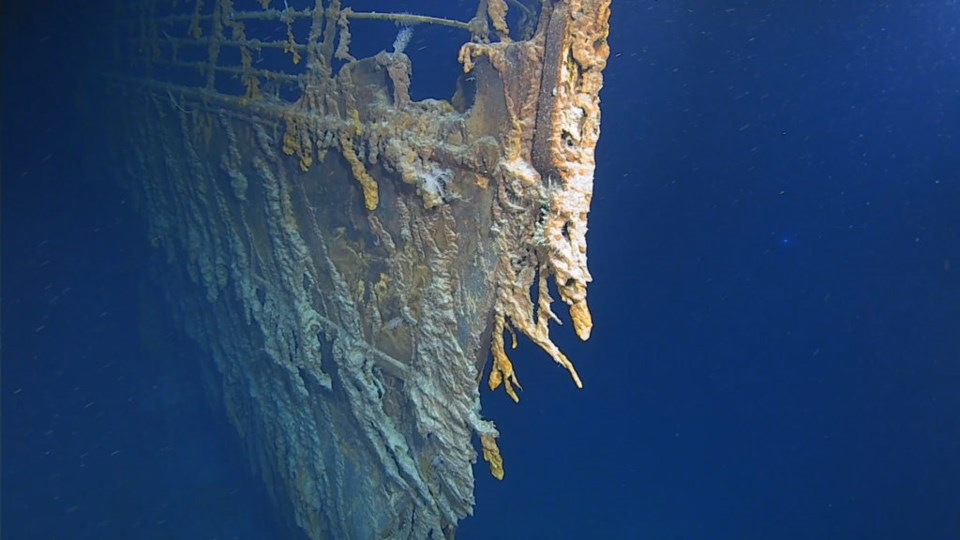A retired Dalhousie University professor believes within the next three decades, the Titanic might be not much more than pile of rust on the ocean floor.
Henrietta Mann said recent 4K video footage of the legendary vessel shows extensive deterioration.
The footage was shot earlier this month by Atlantic Productions, who is working with exploration company Caladan Oceanic on a new documentary.
For the first time in 14 years, the companies sent down a human-occupied submersible to the bottom of the North Atlantic Ocean to survey the wreck.
"The team observed one area of deterioration was in the officer's quarters, where the captain had his rooms," said a news release from Atlantic Productions. "Here the hull has started to collapse, taking with it the staterooms."
In 2010, Mann was part of a team that discovered a new species of bacteria -- Halomonas titanicae -- in samples of rusticles taken from the legendary ship 19 years earlier.
"Rusticles are not simple organisms. They consist of many microorganisms -- algae, bacteria, fungus -- to work together to form these stalactite structures," she explained.
She said the rusticles feed on iron from the ship, adding the deterioration is just a part of nature.
"The life circle doesn't last forever, everything is recycled."
The Titanic was thought to be unsinkable when she left Southampton, England on her maiden voyage, enroute to New York City.
At 11:40 p.m. on April 14, 1912, the ship hit an iceberg. Less than three hours later, she sank to the bottom of the ocean, taking the lives of around 1,500 people with her.
Mann explained every time we send a submersible to visit the underwater graveyard, the ship's deterioration is accelerated by passing propellers stirring up bacteria in the water.
"What happens with rusticles and specifically Halomonas titanicae, it has flagella, like little hairs on the cells ... if there is a surface that isn't already attacked by these microorganisms, now they have a new home and start eating."
Despite that, Mann still believes it's worth sending people down for research purposes.
"We learn something, but for a tourist attraction, I'm not so sure," she said.
- HalifaxToday.ca/Rogers Media
